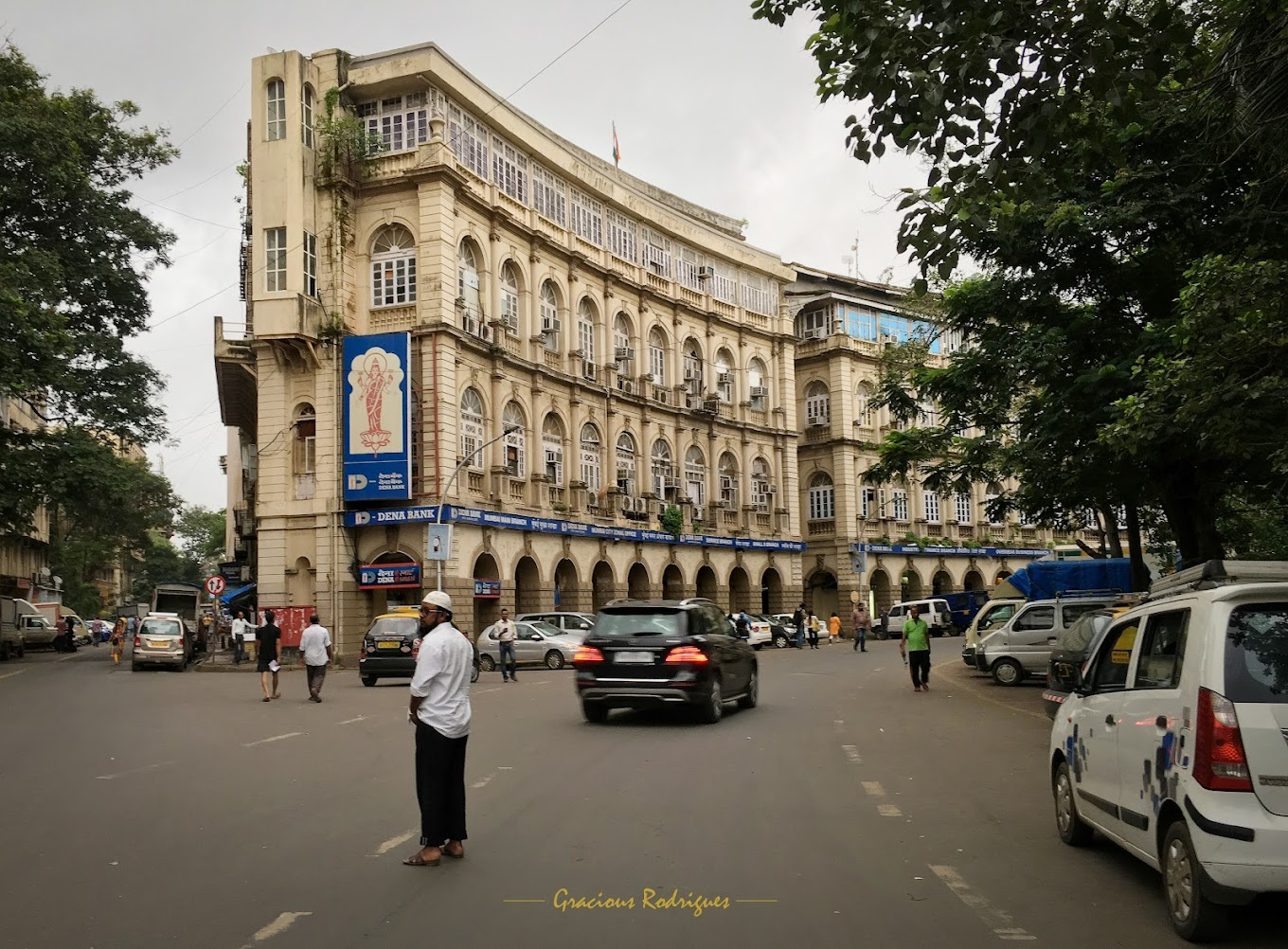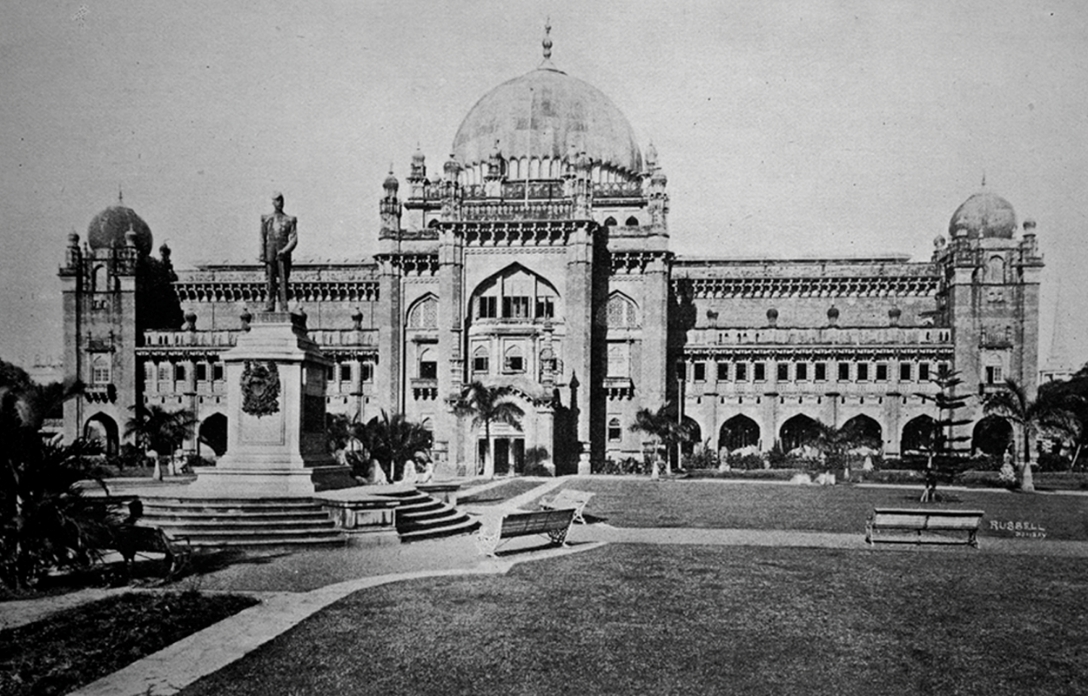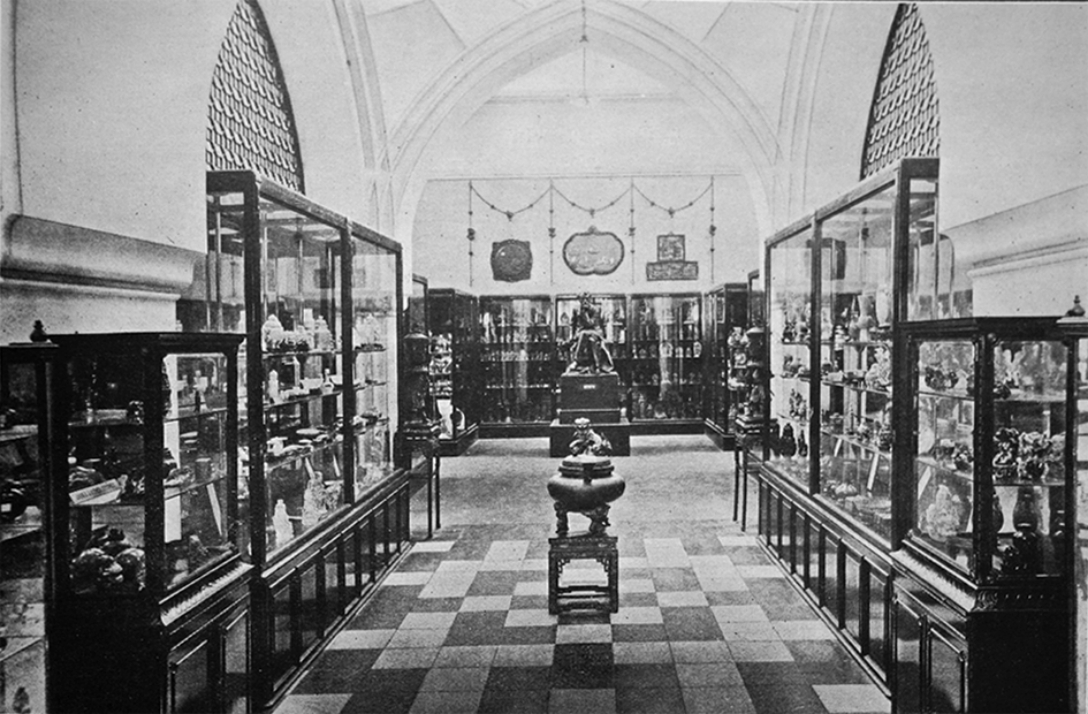
TOWN HALL BOMBAY 1800'S -FORT WALL AND HARBOUR WITH SHIP MASTS CAN BE SEEN THE OPEN GROUND IN FRONT OF TOWN HALL WAS KNOWN AS BOMBAY GREENS WHERE OPEN AIR HAGGLING FOR COTTON BUNDLES AND OTHER EXPORT ITEMS TOOK PLACE .
BELOW ANOTHER VIEW OF BOMBAY GREEN TAKEN FROM TOWN HALL

EAST INDIA COMPANY SOLDIER'S MARCH PAST WITH 2 BOY DRUMMERS IN THE REAR SEEN IN MID GROUND ,COTTON BUNDLES READY FOR EXPORT WITH LOADERS SITTING ON TOP OF IT CAN BE SEEN,ENGLISH OFFICER BEING CARRIED ON A PULKHI WITH TWO SOLDIERS WITH DRAWN SWORDS IN FRONT NEXT TO THE COTTON BUNDLES ,ST THOMAS CATHEDRAL IN THE FAR BACK GROUND,A CHARIOT PRECEDED BY A MUSIC BAND IN THE BACK GROUND,
TWO MERCHANTS IN FLOWING ROBES ON EXTREME RIGHT NEXT TO
TWO ENGLISH GENTRY POSSIBLY HAGGLING OVER MERCHANDISE-1780

BOMBAY GREEN 1830,ST THOMAS CATHEDRAL CHURCH IN BACK l showing the Cornwallis monument

BOMBAY GREEN PHOTO 1850l showing the Cornwallis monument
BOMBAY GREEN SHOWING COTTON BUNDLES FOR EXPORT,WORKERS WEIGHING BUNDLES ON A TRIPOD SHAPED WEIGHT MACHINE,MERCHANTS IN FLOWING ROBES AND CAPS,HAMALS/LOADERS-MEN IN SCANTY CLOTHS WOMEN IN SARIS GOSSIPING? -LIFE WENT ON THEN AS IT IS NOW
BOMBAY TOWN HALL PHOTO 1850'S WITH BOMBAY GREEN GROUND AS SEEN FROM THE TOP OF THE ST THOMAS CATHEDRAL,SAILING SHIPS IN HARBOUR IN THE BACK GROUND

COTTON MARKET BOMBAY NEXT TO BOMBAY HARBOUR 1860,SHIPS WITH MASTS CAN BE SEEN

THE FIRST STAR HOTEL OF INDIA -WATSON HOTEL-CAN BE SEEN IN THE FOREGROUND AS MULTI STORY BUILDING WITH OPEN VERANDAHS-1890[BEFORE TATA WAS CHUCKED OUT OF THE HOTEL AS A DARK SKIN INDIAN,BEFORE TATA MADE TAJ MAHAL HOTEL IN RETALIATION]
TOWN HALL BEFORE DISCOVERY OF CAR/AUTOMOBILES-1880'S
The Town Hall and part of Elphinstone Circle Gardens[BOMBAY GREENS]The garden was planned in 1869 and completed in 1872 with well laid out walkways and trees planted all around.
This photograph was taken by Samuel Bourne in the 1860s. Elphinstone
Circle was constructed from about 1860 onwards on the site of Bombay
Green in the centre of the Fort area. It lies at the eastern end of Vir
Nariman Road, formerly known as Church Gate Street. The elegantly
curved, arcaded terraces exhibit unified Italian facades enriched with
cast-ironwork imported from England. Following Independence the area was
renamed after Benjamin Horniman, an English journalist who was an
ardent proponent of Indian self-determination.

Elphinstone Circle Gardens[BOMBAY GREENS]

HARBOUR BOMBAY-NEAR TO Elphinstone Circle Gardens[BOMBAY GREENS]

BOMBAY GREEN CONVERTED INTO A GARDEN -NOW KNOWN AS HORNIMAN CIRCLE GARDEN
Horniman Circle Gardens - Wikipedia, the free encyclopedia
 |
| Benjamin Horniman 1920 |
B. G. Horniman - Wikipedia, the free encyclopedia
Horniman Circle Garden
https://plus.google.com/114534335881768887204/about?gl=in&hl...Horniman Circle Garden Mumbai, India - Location, Facts ...
www.ixigo.com/horniman-circle-garden-mumbai-india-ne-1314230Horniman Circle Garden Mumbai - Comprehensive travel guide of Horniman Circle Garden in Mumbai, Explore Location, Opening Closing Timings, How to ...Horniman Circle Gardens Mumbai
www.mumbai.org.uk/parks-gardens/horniman-circle-gardens.htmlSituated in the Fort precinct of Mumbai, Horniman Circle Gardens is one among the largest parks in southern Mumbai. This garden is surrounded by various ...Horniman Circle Garden, Fort, Mumbai - Burrp
mumbai.burrp.com/listing/horniman-circle-garden_fort.../1641229445In South Mumbai, Horniman Circle Gardens represents a green territory among the soaring buildings. This large park sprawls in an area of 12,081 square yards,... Mumbai Horniman Circle Gardens - Expedia.co.in
Compare hotel deals near Horniman Circle Gardens in Mumbai. Book with Expedia.co.in & save: lowest prices & instant confirmation.
Architecture, Landscape & Culture of Indian Cities: In the Mid 19th Century
#bombay (Now #mumbai ) 1850's-1870's (#india ) 4:30#calcutta (Now #kolkata ) 1850's-1870's (#india ) 5:25
























![[museum.jpg]](http://3.bp.blogspot.com/_iZMWbgTP0b4/SZ21g5I0wqI/AAAAAAAABUY/uuQiG_iGIgo/s1600-rw/museum.jpg)
